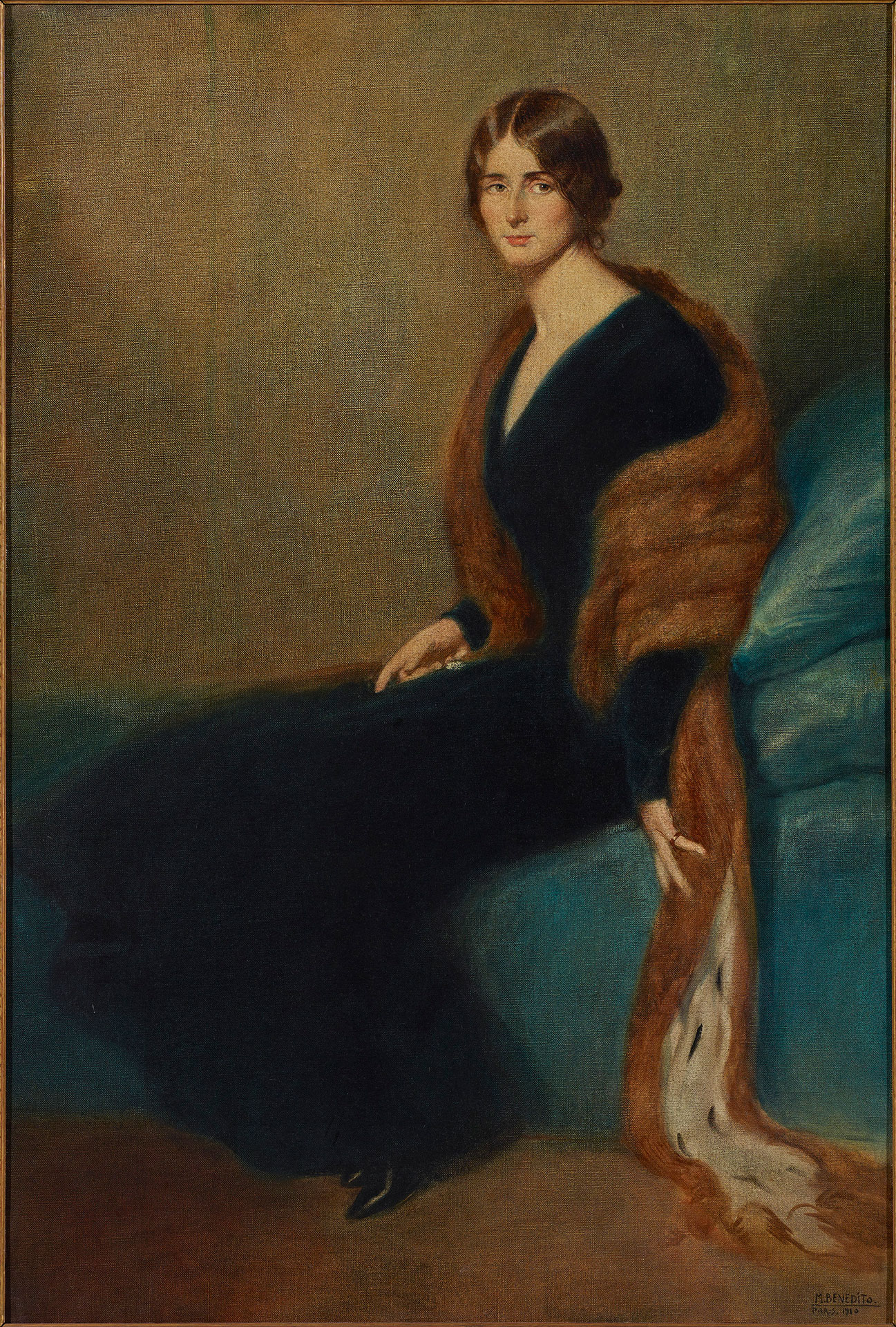
Manuel Benedito (Valencia, 1875 – Madrid, 1963)
Cléo de Mérode
1910
WORK INFORMATION
Oil on canvas, 160 × 108 cm
OTHER INFORMATION
Signed and dated in the lower right-hand corner: "M. BENEDITO / PARIS. 1910"
After studying at the School of Fine Arts of Valencia from 1888 to 1894 and training in Joaquín Sorolla's studio in Madrid from 1896 to 1899, Manuel Benedito received a state grant to work and study in Rome between 1900 and 1904. The same year his grant ended, he won a first-class medal at the National Fine Arts Exhibition and became widely known. Benedito cultivated every genre but was particularly drawn to portraiture, a facet represented in the Banco Santander Collection by his painting of Cléo de Mérode, which some regard as the artist's finest portrait. He painted the famous dancer—who was born in Brussels in 1875 and died in Paris in 1960—at the studio he kept during that period in the French capital. Painted on very coarsely woven canvas with paint diluted by layers of glaze, the picture's greatest strength is how the contours of the figure subtly fade into the background, suggesting an aura of mysterious charm about the sitter. The palette of ochres and greens and the way the black dress with its simple neckline emphasises the figure's delicacy is quite elegant.
Benedito's skill as a portraitist is also evident in his 1952 likeness of the Zaragoza-born jurist José Gascón Marín (1875–1962), who served as the Minister of Public Education. He is portrayed with the sash and badge of the Grand Cross of the Order of Alfonso X the Wise, conferred upon him in 1945, and the medal of the Royal Academy of Moral and Political Sciences, an institution he had joined in 1920 and which, one year after this portrait was painted, elected him as its president. With the pronounced realism typical of the painter's final period, the light falls strongly on the almost sculptural hands and face of the sitter, who wears the robe of his profession.
Benedito also made important contributions to genre painting, especially hunting themes; the artist was an avid hunter and had family ties to this activity, as his father and two of his brothers were professional taxidermists. Return from the Big Game Hunt is a monumental, almost epic composition, and this impression is heightened by the arrangement of the figures silhouetted against the bright sky in the upper part of the canvas. Its decorative quality, the precision of the drawing and the crisp, clear colours undoubtedly reflect the artist's intention to use it as a cartoon for a tapestry. Due to the complexity of the composition, he did several preparatory studies, including an excellent modello now at Fundación Manuel Benedito from sketches taken on a rural estate in the Sierra Morena, where he signed and dated the painting. In the upper register the group forms a triangle, with the apex marked by a magnificent deer for which the artist made a study now in a private collection. The buck crowns the composition like a trophy in the fullest sense of the word, and beside it we see the head huntsman with his shotgun and deer call, while the pack of hounds below demonstrates the artist's ability to capture living, moving animals. Benedito produced a high-quality etching on the same motif. [Javier Barón Thaidigsmann]

